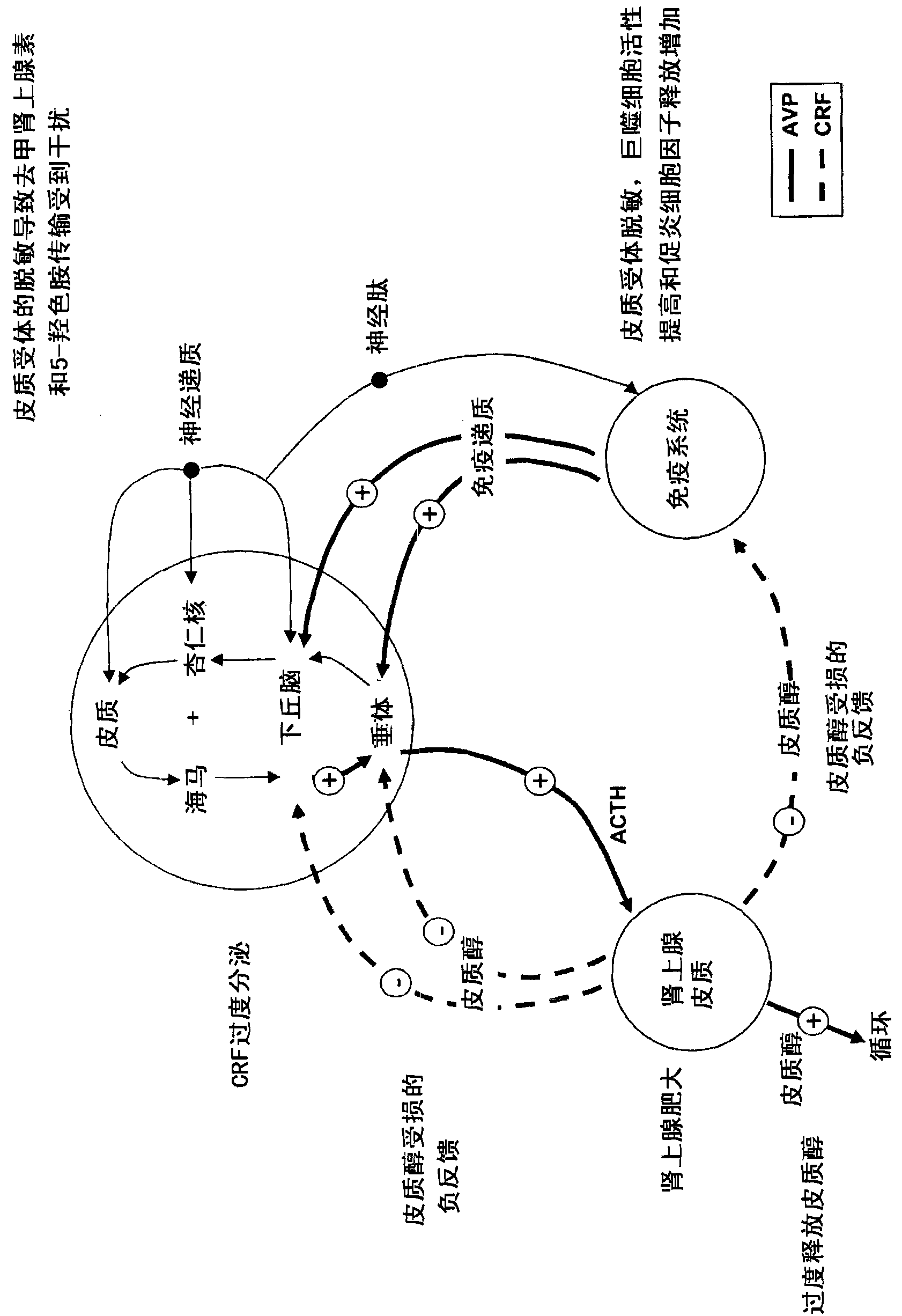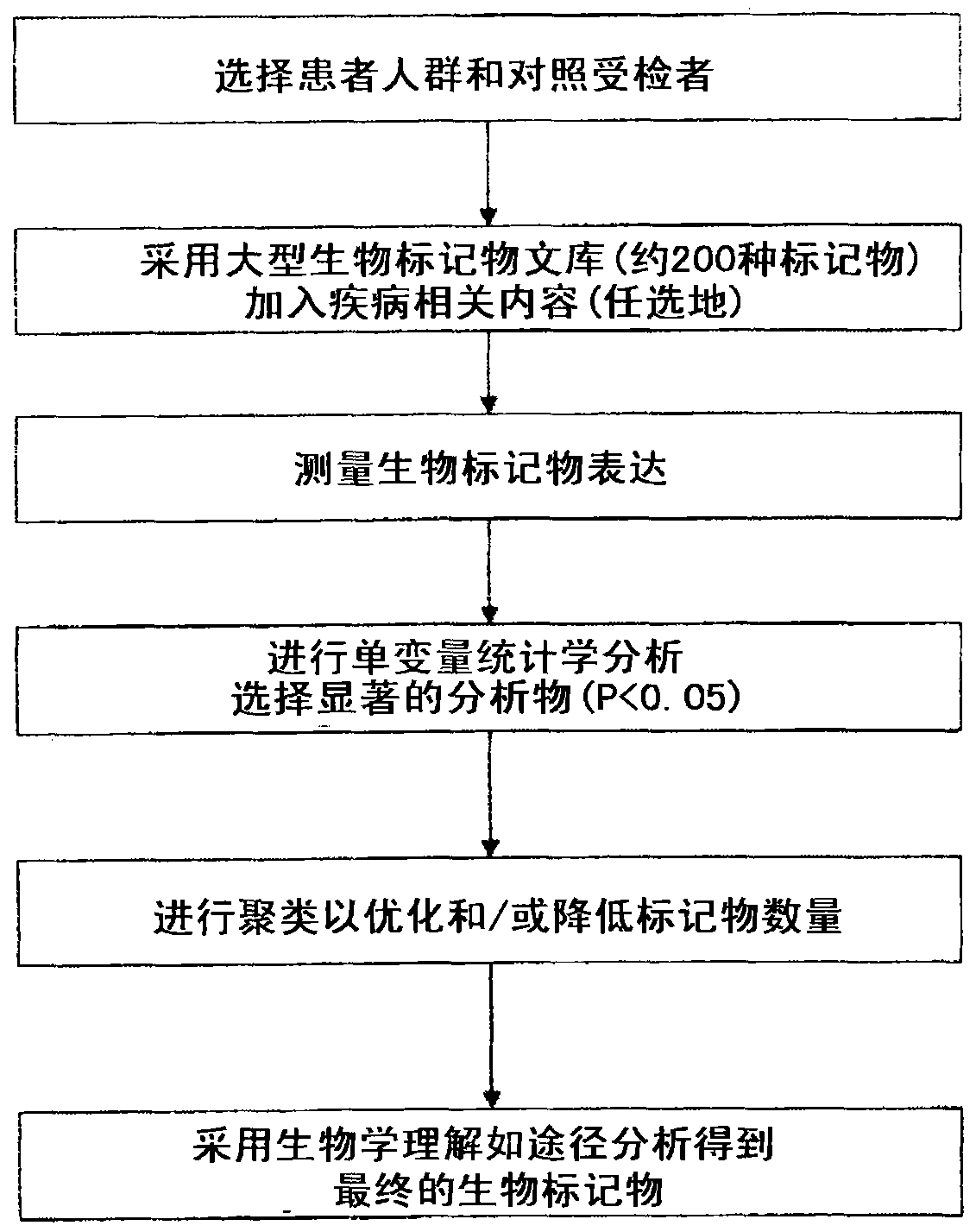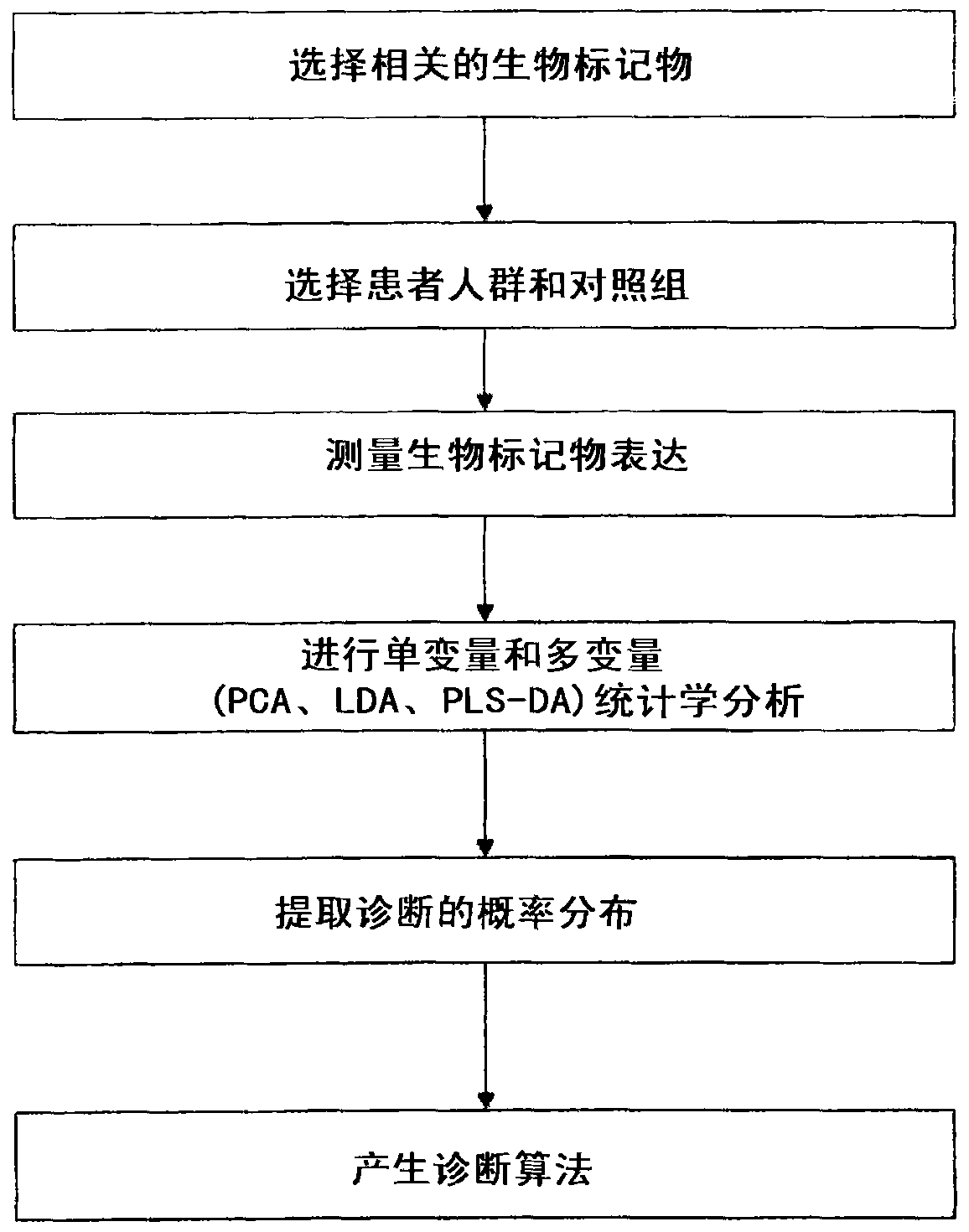Diagnosing and monitoring depression disorders based on multiple biomarker panels
A technology of biomarkers and depression, applied in biological testing, biochemical equipment and methods, microbiological determination/inspection, etc., can solve problems such as inaccurate diagnosis, insufficient dose of antidepressants, and suboptimal treatment results
- Summary
- Abstract
- Description
- Claims
- Application Information
AI Technical Summary
Problems solved by technology
Method used
Image
Examples
Embodiment 1
[0114] Example 1 - Diagnostic Markers for Depression
[0115] The methods provided herein were used to develop an algorithm for determining a depression score that can be used to diagnose or determine the predisposition to MDD, and to evaluate a subject's response to antidepressant treatment. Characterization of molecular correlates of depression using a multiplex assay system. Three statistical approaches were used for biomarker evaluation and algorithm development: (1) univariate analysis examining the distribution of biomarkers associated with MDD; and (2) linear discriminant analysis (LDA) and (3) for the algorithm Constructed binary logistic regression.
[0116] Univariate analysis of individual analyte levels: Serum levels of each analyte were determined using Luminex multiplex technology and compared between depressed patients and normal subjects using "Student" t-test. The significance level was set at α≤0.05. Univariate analysis explores each variable in the data...
Embodiment 2
[0125] Example 2 - Selection of multiplex biomarkers for MDD
[0126] Serum levels of approximately 100 analytes were determined using the Luminex multiplex technique using the "Student" t-test. The data were then analyzed for comparison between depressed and normal subjects. The significance level was set at α≤0.05. Following preliminary studies, the analytes listed in Table 1 were selected based on statistical significance. This is followed by multivariate analysis (PCA, PLS-DA, LDA) to identify markers that can be used to differentiate MDD patients from the normal population.
[0127] Table 1 lists 18 biomarkers and shows the nature of each analyte's potential relationship to the pathophysiology of unipolar depression.
[0128] Table 1
[0129]
[0130] The potential relevance of each marker to MDD is discussed further here.
Embodiment 3
[0131] Example 3 - Using Algorithms to Calculate MDD Score and Evaluate Treatment
[0132] Using 16 of the markers listed in Table 1 and ACTH, a diagnostic score was established based on the following algorithm:
[0133] Depression diagnostic score = f(a1*analyte 1+a2*analyte 2+a3*analyte 3+a4*analyte 4+a5*analyte 5+a6*analyte 6+a7*analyte 7+a8* Analyte 8+a9*Analyte 9+a10*Analyte 10+a11*Analyte 11+a12*Analyte 12+a13*Analyte 13+a14*Analyte 14+a15*Analyte 15+a16*Analyte 16+a17*ACTH)
[0134] Using this algorithm, a depression score per unexamined subject was assigned.
[0135] Using five of the markers listed in Table 1 (A2M, BDNF, IL-10, IL-13, and IL-18), a statistically plausible diagnostic score was established based on the following algorithm:
[0136] Depression diagnostic score = f(a1*A2M+a2*BDNF+a3*IL-10+a4*IL-13+a5*IL-18)
[0137] In practice, a small set of biomarkers is sufficient to aid in the diagnosis and treatment monitoring of MDD, with or without additiona...
PUM
 Login to View More
Login to View More Abstract
Description
Claims
Application Information
 Login to View More
Login to View More - R&D
- Intellectual Property
- Life Sciences
- Materials
- Tech Scout
- Unparalleled Data Quality
- Higher Quality Content
- 60% Fewer Hallucinations
Browse by: Latest US Patents, China's latest patents, Technical Efficacy Thesaurus, Application Domain, Technology Topic, Popular Technical Reports.
© 2025 PatSnap. All rights reserved.Legal|Privacy policy|Modern Slavery Act Transparency Statement|Sitemap|About US| Contact US: help@patsnap.com



